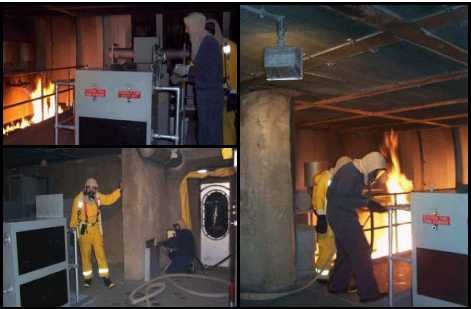Speaking of phosgene...
Back in the good ol' days, we use to deposit doped SiO2 using atmospheric chemical vapor deposition, in a tool we lovingly called the "flame deposition" tool, so-called because of its tendency to clog, screwing up the balance of gases, then literally shoot flames out the sides of the mixing head. Imagine a metal plate, heated by internal heating rods, hooked to a conveyor, which slowly made passes back and forth beneath a mixing head, consisting of numerous thin plates bolted together. Now imagine flowing silane, oxygen, and a dopant gas through the mixing head. One many occasions, the head would clog with residue from the reaction, throwing off the ratios. Silane, in particular, is prone to spontaneous explosion when exposed to air, but sometimes it just "powders" everything with oxide dust. In either case, looking up to see flames shooting out of the thing was quite exhilarating...
To make a long story longer, we used arsine, phosphine, and diborane for dopant gases. These were stored in a SS gas cabinet in the SCRAM room with the "flame deposition " tool. One day, we noticed an odor out in the main part of the fab, and, upon investigation, we discovered it was a diborane "leak". I say "leak, but what really happened was the installer had put an in-line filter in the gas jungle inside the gas containment cabinet which was not welded, but was two-piece with an o-ring. Problem was, after some period of time, the o-ring deteriorated, and, when it gave way, an entire bottle of diborane gas was vented to atmosphere. Thankfully, the cabinet was well exhausted, and most of the gas went up the stack to the scrubber system. I say thankfully, since diborane is HIGHLY toxic... As an aside, the toxic gas detector for the SCRAM room was in "calibration mode" at the exact time of the leak, and didn't issue ANY warning, nor provide ANY record of the concentration level... I fully expect to grow a extra limb someday, as a result of the exposure...

